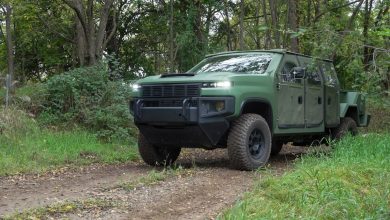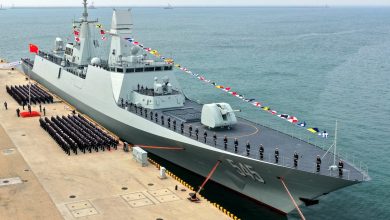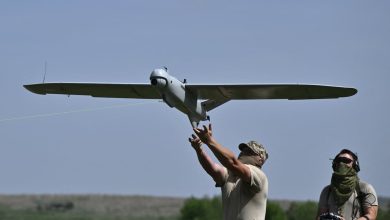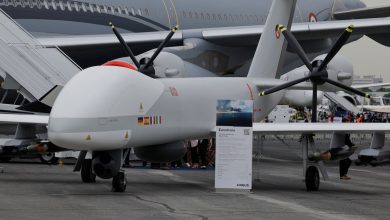finding space to prepare for war
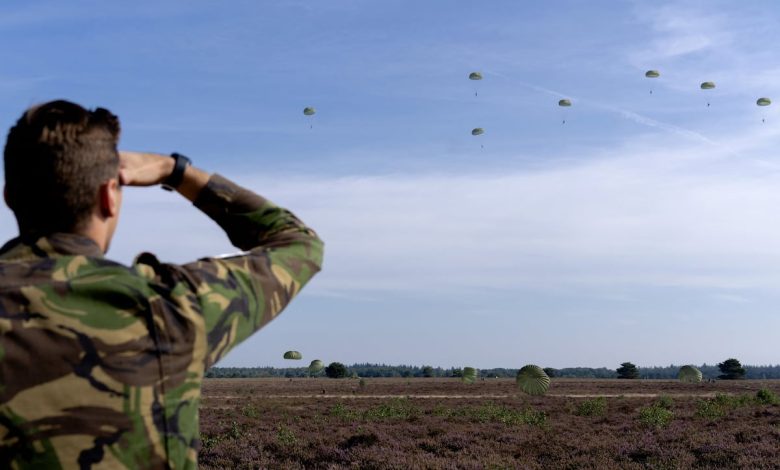
PARIS — With trench warfare back in Europe, the Royal Netherlands Army would like to dig ditches to train for defense of NATO’s eastern flank – but environmental regulations make taking a shovel to its exercise ranges all but impossible.
Other Dutch services face hurdles to improving military readiness. The Air Force is keen to fly its F-35 fighters more often, yet is bound by flight restrictions at air bases hemmed in between villages, farms and cities, in a country that takes 10 minutes to cross by super-cruising jet.
The country’s new civil-military conundrum is emblematic of similar developments elsewhere in Europe, where space is limited in densely populated areas, and modern regulations are tuned to reconcile economic and environmental goals, not matters of war and peace.
As the armed forces of the Netherlands expand again after three decades of budget cuts, they’re looking to step up everything from live fire exercises to low-level helicopter training and ammo stockpiles. The government is puzzling how to fit additional defense activity in a country more densely populated than any of its NATO allies, and where military terrain left empty after the Cold War was converted to civilian use by planners hungry for space.
“There is a need for more terrain and more exercise facilities, and that’s a problem, because a lot has completely disappeared, is no longer usable,” said Dick Zandee, senior research fellow at Dutch think tank Clingendael Institute and former head of planning at the European Defence Agency. “All kinds of things that were possible during the Cold War are no longer possible.”
RELATED
Dutch State Secretary for Defence Gijs Tuinman is wrapping up a tour of provincial capitals this week in a last diplomatic push of his ministry’s “Room for Defense” plan. The government will narrow down possible locations next month for everything from corridors to fly cargo drones to a new mock village to train urban combat and an additional range for explosives training.
The government plan to free up physical and regulatory space for defense solicited more than 2,200 written questions from citizens, firms and local politicians. Increased military jet sorties were the biggest area of concern, ahead of low-flying rotorcraft, explosives training, ammo storage and drone flights.
While surveys show the Dutch population supports strengthening the armed forces and NATO, citizens may not be ready for associated nuisances such as low-flying helicopters, according to Zandee. “Citizens all recognize that it’s all necessary, but as soon as it comes near their homes, then suddenly they don’t want it. That’s the inconsistency in the reasoning, of course.”
Still, public tolerance for certain inconveniences will have to go up if the Netherlands wants to remain prosperous and secure, argues Tuinman, a decorated former officer in the Dutch Commando Corps who served five tours in Afghanistan. That may mean accepting the occasional fighter jet overhead, or a tank driving through a farm field, the state secretary said in political talk show Buitenhof last month.
“We’ve been used to the government ensuring that every year you have a little less nuisance,” Tuinman said. “What the Americans call the sound of freedom, that’s ultimately important. That we again learn to appreciate that what we have requires an effort.”
‘Room for Defense’
The armed forces held two dozen information meetings between June and October, bringing out brass up to three-star generals to answer questions from the public. Concerned attendees included a campground owner fretting that noisy F-35s overhead will hurt business and homeowners who found their property drawn inside a red circle on a map indicating plans for ammo storage.
The ministry is also eyeing several areas owned by conservation group Natuurmonumenten, including a dune-wetland reserve that is home to rare orchids and a stopover for migratory birds. The Marines would like to train amphibious landings there, something the nature group calls “unthinkable.”
“Nature is already under so much pressure, should this be added?” said Jeroen de Koe, director for nature at Natuurmonumenten, which is the Netherlands’ largest private property owner. “Not as far as we’re concerned.”
The late urban planner Dirk Frieling described the Netherlands as “not a densely populated country but a sparsely populated city.” The country was home to an average 518 people per square kilometer in 2022, more than twice as many as Germany or Italy and almost five times as many as France, European Union statistics show.
The Netherlands also houses Europe’s largest seaport and its fourth-busiest airport and is the continent’s largest agricultural exporter, leaving society and nature scrambling for space.
After the collapse of the Soviet Union in 1991, defense moved down the priority list in Western Europe, and spending was redirected to areas such as healthcare, education and infrastructure, Most armies geared around a conscription component were downsized and reorganized into smaller forces of professional soldiers, with some military real estate abandoned or repurposed.
In the Netherlands, ammo bunkers were turned into storage for ripening cheese, barracks were reassigned for uses such as medical centers, or demolished to build apartments. New rules around issues such as noise pollution and environmental protection threw up hurdles to military land use.
“Until the fall of the Wall we had barracks all over the place in the Netherlands, with their associated local training grounds,” Zandee said. “That’s all gone. Defense got rid of a lot of those barracks, and local training grounds were handed over to the municipalities.”
Russia’s invasion of Ukraine in February 2022 shook Western countries awake, with governments realizing that decades neglecting military power had left them unprepared for war. In response, the Netherlands plans to boost its defense budget to around €24 billion ($26 billion) a year, nearly double what it spent on defense two years ago.
The Netherlands is using a share of the extra billions for new capabilities that require space, from rocket artillery to a tank battalion and an Army drone unit, and is experimenting with a year of voluntary military service for young people in order to attract more personnel.
The Dutch are in talks with Germany to station their future tank battalion at the NATO training areas of Bergen-Hohne, as the practice and shooting ranges in the Netherlands lack the space to realistically train with a battalion of heavy armor.
The changed security situation has also squarely put the focus back on territorial defense and NATO’s mutual defense, rather than peacekeeping missions abroad, which requires more frequent and larger-scale training, according to Zandee. The Netherlands is just too small to practice some things, such combined-arms exercises, he said.
Boosting deterrence requires a more ambitious exercise program, a NATO official told Defense News. The alliance this year held Steadfast Defender, its biggest exercise in more than 30 years, which saw the Dutch 13th Light Brigade build a pontoon bridge over the IJssel river before driving through Germany to Poland to train as an entire brigade.
For the Dutch, an exercise on that scale “has obviously not happened since the Cold War,” Zandee said. “That just indicates how the situation has changed.”
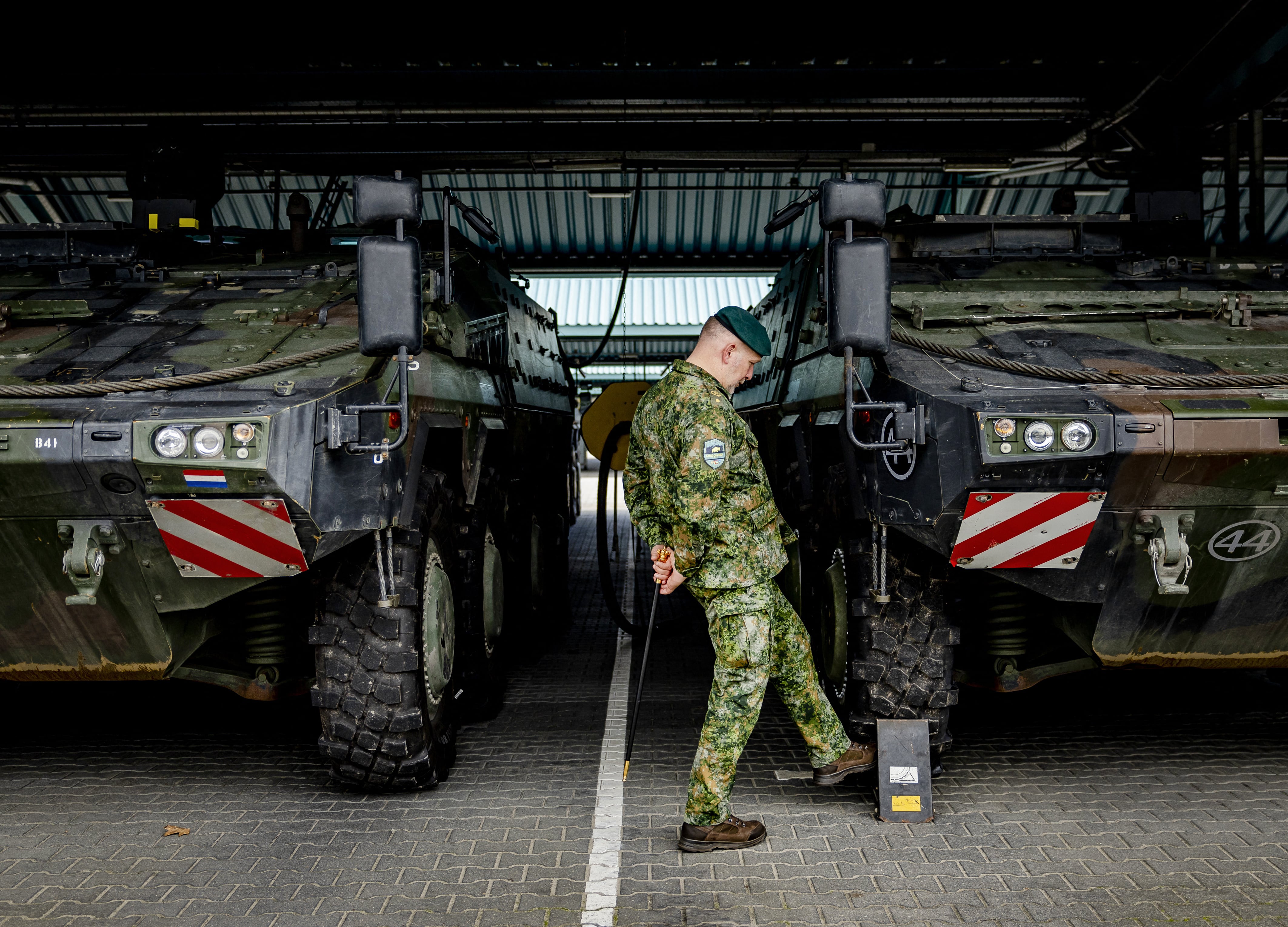
NATO is planning further large exercises that will require more intensive use of training grounds, public infrastructure and sometimes private land, according to the alliance official. Many countries sold training ranges in the past two decades, and are now in the process of rebuilding or expanding them, the official said.
Lithuania, which has been hosting troops from NATO allies including from the Netherlands, in June approved creating two new training areas big enough for maneuvers with a company-sized unit. Even more space will be necessary in the future, and relocations may be necessary, presidential adviser Kęstutis Budrys told local radio broadcaster LRT in July, citing “a new reality.”
The Dutch military says it still needs additional room to train domestically, as doing even more abroad isn’t really an option, The Army already spends about 60% of its training hours outside Dutch borders, while the Air Force makes 40% of its flight hours in foreign skies, even more when counting pilot training.
“This is about a minimum requirement for Defence, and that has to be in the Netherlands,” said Martijn van der Wind, a spokesman for Tuinman. “We simply also need space in the Netherlands,”
The MoD is looking for capacity to add 2,300 fighter sorties in the Netherlands, including for large-scale NATO exercises, and a dirt strip to practice with tactical transport aircraft for at least 240 flights a year. The armed forces need around 2,500 hours to train with low-flying helicopters, compared with current permission for 1,378 hours, according to the ministry.
The “Room for Defense” plan envisages cargo-drone corridors and helicopter-landing zones in densely populated parts such as the province of South Holland. In the more sparsely populated north, the ministry is considering areas to practice amphibious landings and fly unmanned naval helicopters, new ammunition storage and an explosives-training range.
The provinces have been less than welcoming about the plans, citing their own difficulties finding space for new homes or renewable energy, and the potential for disturbance caused by low-flying helicopters, irreparable damage from digging trenches in natural areas, or the increased risk of forest fires from defense activities in combination with climate change.
Farmers’ organization LTO Noord has called on the defense department to invest in its existing real estate and better use already available space, as well as reinstate abandoned terrains. The farmers are particularly worried about the effect of new helicopter-landing zones on animal welfare.
Natuurmonumenten was caught off guard by the plans and the lack of discussion, said De Koe.
The military is also eyeing two forested areas owned by the conservation group for explosives training, on terrain the non-profit says is home to several protected bird species.
Deer and Gouda
“How on Earth does Defence envision this, to start using vulnerable areas for all kinds of military use?” De Koe said. With nature in the Netherlands already suffering from nitrogen pollution, poor water management and excess recreational use, it can’t handle more external pressures, he said,
De Koe said finding room for more defense activity is admittedly complex, but the Netherlands has more suitable areas than some of those now pencilled in. The government is the largest property owner in the Netherlands, and the Dutch national property office manages around 26,000 hectares of air bases, exercise areas and shooting ranges for the defense ministry.
“If I would have a lot of land and I would want to do something new, I would first look at my own land to see if that is possible, and only then see if the neighbor’s garden might also be available.”
Complicating the issue is that about two-thirds of defense ministry land consists of protected nature reserves, and military use isn’t necessarily bad news for plants and animals, De Koe at Natuurmonumenten acknowledged.
Birds and deer get used to loud explosions, which are less disruptive than human visitors, according to national property office ecologist Theo Linders, who says deer on military ranges are less shy than those in recreational nature areas. Craters caused by mortar shells mix up the soil and create a steppe landscape that benefits certain vegetation, Linders says.
Tuinman has been happy to adopt the conservation argument, saying nature in some areas of the Netherlands has been protected precisely because of its military status.
The government will decide on the most feasible locations next month based on support from society and lawmakers, defense needs and the environmental impact, Van der Wind said.
The Dutch understand the need to find room for defense, “that’s never the issue,” and their concerns are rather about how the plans will impact their living environment, Tuinman said in an Oct. 3 interview with broadcaster NPO1. Nevertheless, defending freedom and security means society must step up and the armed forces need to become stronger, he said.
“We need more equipment, we need to train more, we need to shoot more, and at the end of the day, we need to do that together,” Tuinman said.
Rudy Ruitenberg is a Europe correspondent for Defense News. He started his career at Bloomberg News and has experience reporting on technology, commodity markets and politics.
Read the full article here

